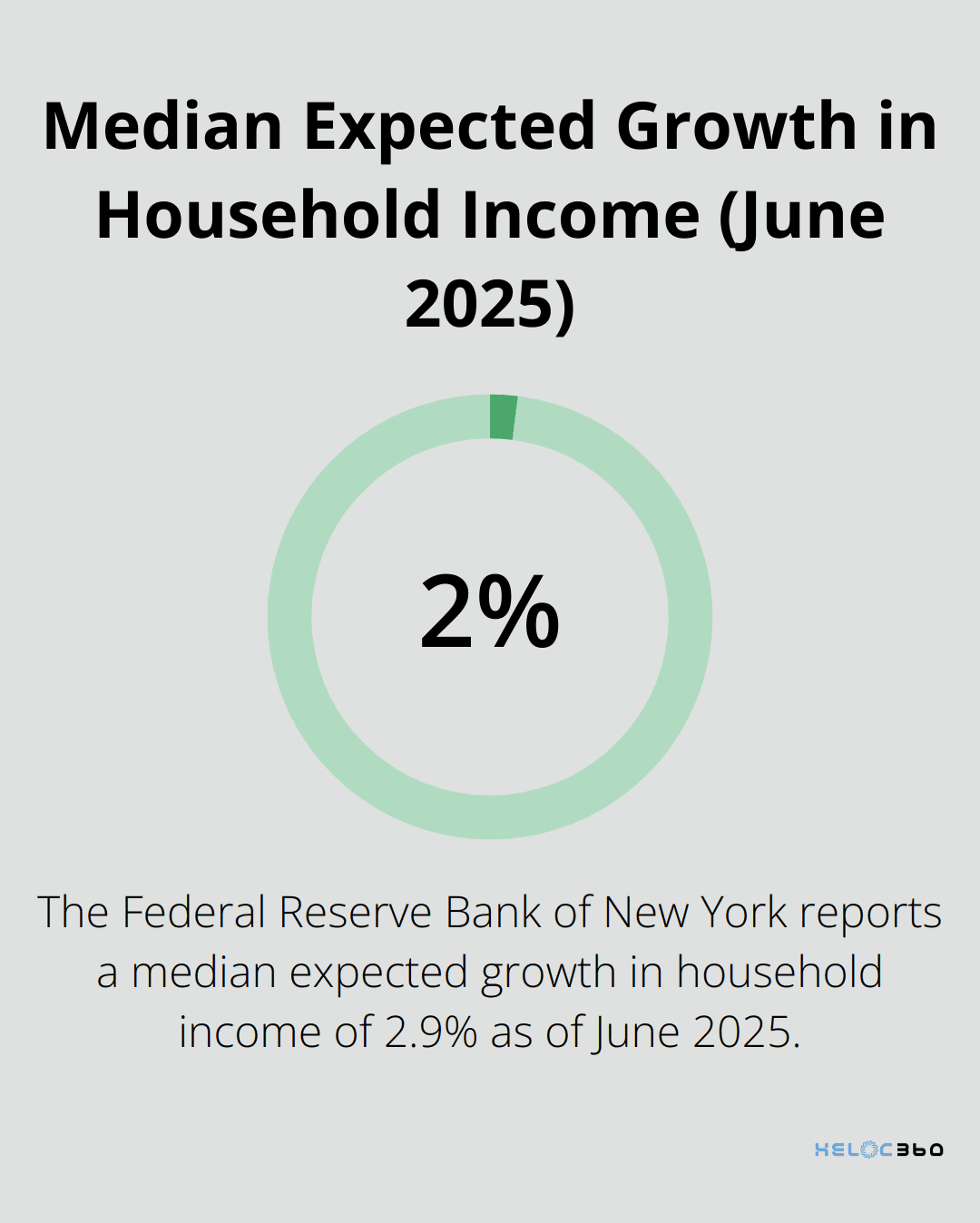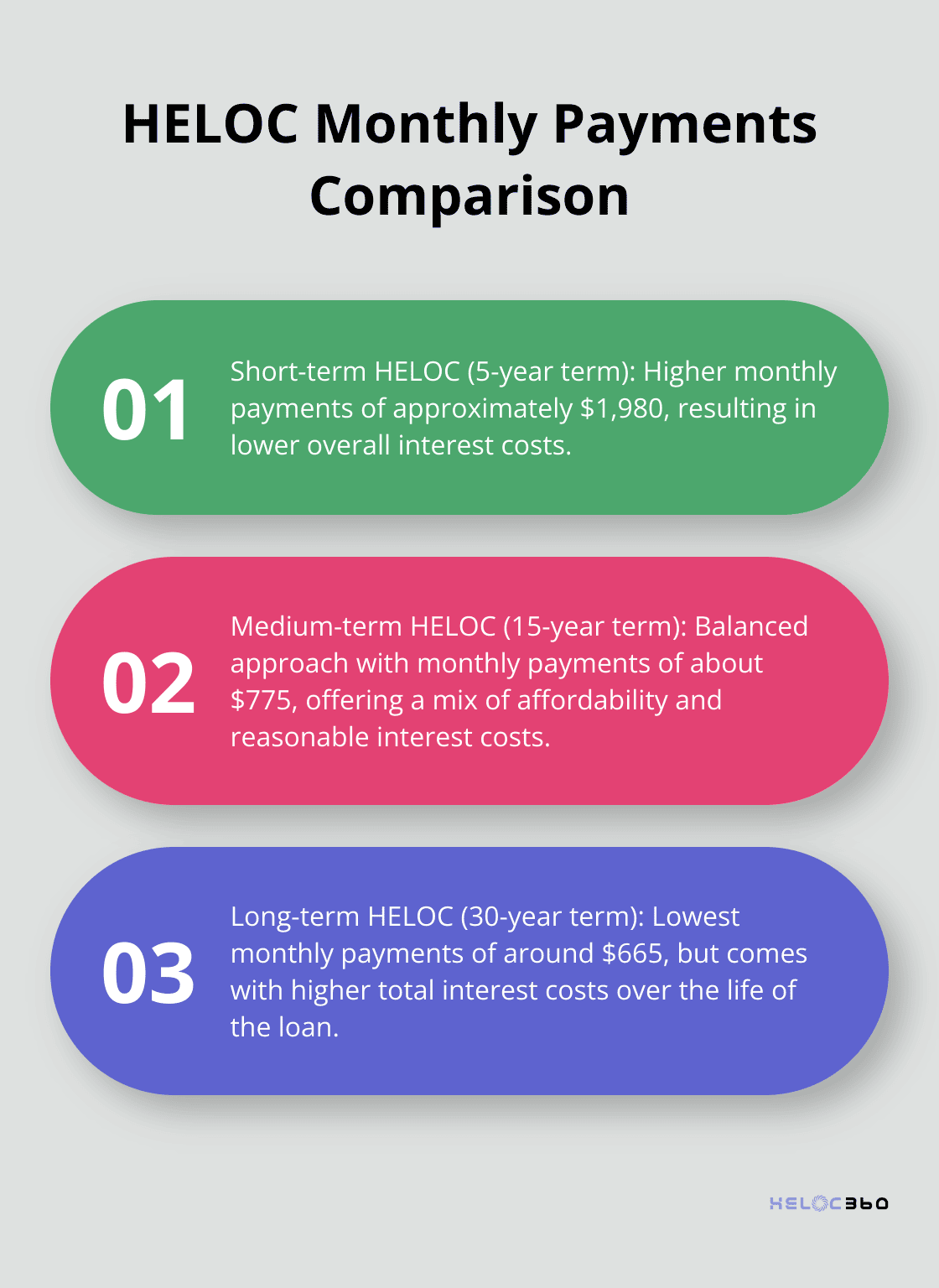Choosing the right HELOC term can make a significant difference in your financial journey. At HELOC360, we understand that this decision can be challenging for homeowners and investors alike.
In this post, we’ll explore the factors to consider when selecting a HELOC term and how it can impact your financial goals. We’ll also break down the pros and cons of different term lengths to help you make an informed choice.
What Is a HELOC Term?
Understanding the Components of a HELOC
A HELOC term encompasses the total duration of your Home Equity Line of Credit. This term consists of two distinct phases: the draw period and the repayment period. Understanding these components will help you make informed decisions about your financial future.
The Draw Period: Your Borrowing Window
The draw period marks the initial phase of your HELOC, typically lasting up to 10 years. During this time, you can borrow against your credit line as needed, similar to a credit card. You’re usually only required to pay interest on the amount you’ve borrowed, which can benefit your cash flow management.
For instance, if you have a $100,000 HELOC and borrow $20,000 for home renovations, you’ll only pay interest on that $20,000. This flexibility allows you to address projects or expenses as they arise without committing to a lump sum loan.
The Repayment Period: Paying It Back
After the draw period ends, you enter the repayment period. This phase usually lasts 10 to 20 years, during which you can no longer borrow from the credit line. Your payments now include both principal and interest, which can lead to a significant increase in monthly obligations.
To illustrate, if you borrowed $20,000 during a 10-year draw period, you might have a 15-year repayment period to pay back the principal plus interest. It’s important to plan for this transition to avoid financial strain.

Selecting Your HELOC Term
The length of your HELOC term can vary depending on the lender and your financial situation. Some lenders offer terms as short as 5 years, while others extend up to 30 years. Your choice should align with your financial goals and repayment capacity.
A shorter term might suit you if you plan to sell your home in the near future or expect a significant income increase. Conversely, a longer term could benefit you if you want lower monthly payments and more time to repay the borrowed amount.
Keep in mind that while longer terms may offer lower monthly payments, they often result in paying more interest over time (sometimes up to twice as much as shorter terms). It’s essential to weigh the trade-offs and choose a term that balances affordability with long-term financial health.
As we move forward, let’s explore the factors you should consider when choosing the right HELOC term for your unique situation.
What Shapes Your HELOC Term Decision?
Aligning with Your Financial Objectives
Your financial goals significantly impact the selection of an appropriate HELOC term. Short-term projects like home renovations might benefit from a briefer HELOC term, while long-term objectives could require an extended term for ongoing expenses.
Consider a kitchen remodel you plan to complete within two years; a shorter term might suit this goal better. In contrast, financing a child’s four-year college education could necessitate a longer term for added flexibility.
Assessing Your Income Trajectory
Your current and anticipated future income plays a critical role in determining your HELOC term. A shorter term with higher payments might work if you expect a significant income increase soon. However, a longer term with lower monthly payments could prove more manageable if your income remains stable or you approach retirement.
The Federal Reserve Bank of New York reports a median expected growth in household income of 2.9% as of June 2025. Evaluate how your personal income growth compares to this figure and how it might affect your HELOC repayment capacity over time.

Navigating Interest Rates and Market Conditions
The current interest rate environment and market conditions should influence your HELOC term decision. A longer term might appeal more in a low-interest-rate environment to secure favorable rates. However, a shorter term could prove advantageous if rates are high or expected to decrease, allowing for refinancing when rates improve.
As of July 9, 2025, Bankrate reports the national average HELOC rate at 8.27%. These rates can fluctuate based on market conditions and your credit profile. Stay informed about market trends and their potential impact on your HELOC over time.
Evaluating Your Home’s Equity and Value
The amount of equity in your home and its current market value fundamentally determine your HELOC term. Most lenders allow borrowing up to 80-85% of your home’s value minus your outstanding mortgage balance. Substantial equity might offer more flexibility in choosing your term length.
For example, a home valued at $500,000 with a $300,000 mortgage balance could potentially access up to $125,000 in a HELOC (assuming an 85% loan-to-value ratio). This significant amount might warrant a longer term to ensure manageable repayments.
Your home’s value can fluctuate over time. The S&P CoreLogic Case-Shiller U.S. National Home Price NSA Index recorded a 3.4% annual gain in home prices as of March 2025. Factor in potential changes in your home’s value and how they might affect your HELOC in the long run.
These factors will help you make an informed decision about your HELOC term that aligns with your financial situation and goals. Let’s now explore the advantages and disadvantages of different HELOC terms to further guide your decision-making process.
How Different HELOC Terms Compare
Short-Term HELOCs: Quick Access, Higher Payments
Short-term HELOCs provide rapid access to funds with a shorter repayment period. These suit homeowners with specific, short-term financial goals or those who expect a significant income boost soon.
The main advantage of short-term HELOCs is lower overall interest costs.
However, short-term HELOCs come with higher monthly payments during the repayment phase. For a $100,000 HELOC at 7% interest, your monthly payment could reach $1,980 over a 5-year term (compared to $775 for a 15-year term).
Medium-Term HELOCs: A Balanced Approach
Medium-term HELOCs strike a balance between manageable monthly payments and reasonable interest costs. These appeal to homeowners funding major renovations or long-term projects.
A key benefit of medium-term HELOCs is flexibility. You have more time to draw funds and a longer repayment period, which proves particularly useful for phased home improvement projects.
Medium-term HELOCs may tempt you to borrow more than necessary due to the extended repayment period. Try to stick to your original borrowing plan to avoid overextending yourself financially.
Long-Term HELOCs: Lower Payments, Higher Interest
Long-term HELOCs extend 20-30 years and offer the lowest monthly payments but come with higher total interest costs. These suit homeowners who prioritize cash flow management or those with long-term financial strategies.
The primary advantage of long-term HELOCs is affordability. Monthly payments can drop significantly, making it easier to manage your budget. For instance, a $100,000 HELOC at 7% interest over 30 years would result in a monthly payment of about $665 (compared to $775 for a 15-year term).
However, the total interest paid over the life of a long-term HELOC can swell.

Your choice of HELOC term depends on your financial situation, goals, and risk tolerance. Short-term HELOCs offer cost savings but require higher monthly payments. Long-term HELOCs provide payment flexibility but at a higher overall cost. Medium-term HELOCs offer a middle ground, balancing affordability with reasonable interest costs.
Final Thoughts
Selecting the right HELOC term will shape your financial future. Your goals, income expectations, market conditions, and home equity all influence the most suitable term for your needs. Short-term HELOCs provide quick access to funds with higher monthly payments but lower overall interest costs, while long-term options offer lower monthly payments at the expense of higher total interest.
There’s no universal solution for HELOC terms. Your choice must align with your unique financial situation and long-term objectives. It’s important to consider how each option fits into your overall financial strategy and affects your future plans.
At HELOC360, we simplify the process of selecting the right HELOC term. Our platform provides tools and expertise to help you make an informed decision. We connect you with lenders that match your specific requirements, ensuring you find a HELOC solution tailored to your goals.
Our advise is based on experience in the mortgage industry and we are dedicated to helping you achieve your goal of owning a home. We may receive compensation from partner banks when you view mortgage rates listed on our website.
